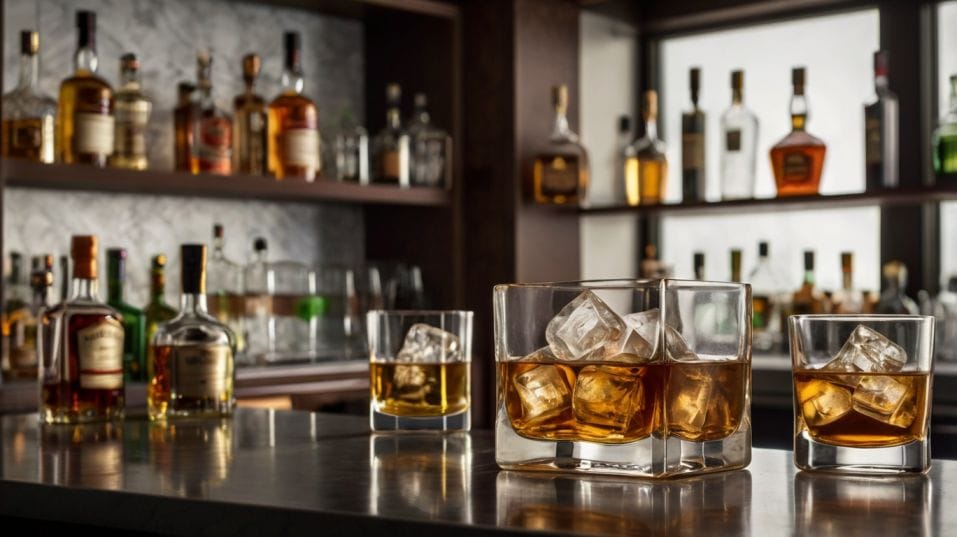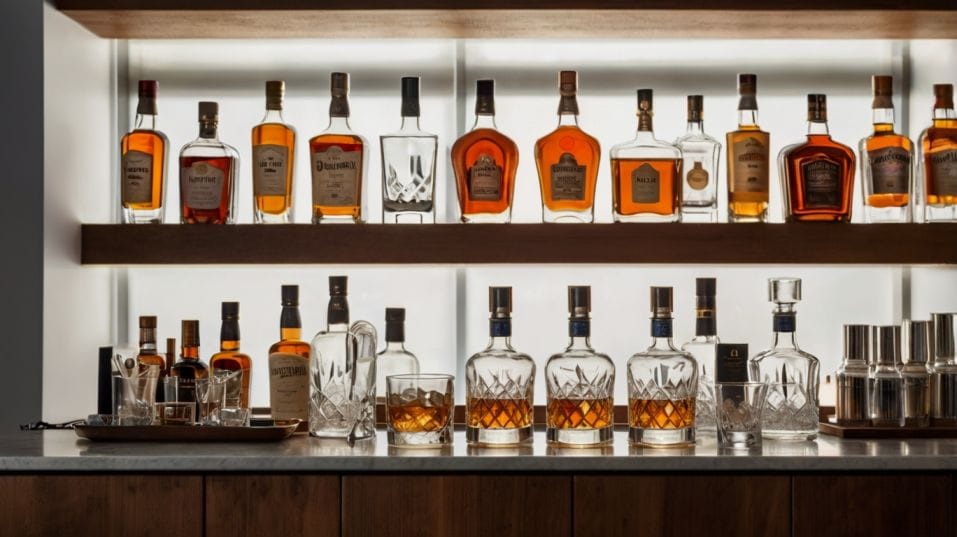Home Bar Mistakes That Make You Look Like a Rookie
Avoid rookie mistakes and elevate your whiskey game. Build a home bar that helps you taste better, collect smarter, and pour with confidence.

Are you serious about whiskey—or just stocking bottles? A great home bar should elevate every pour, but most whiskey lovers make avoidable mistakes that dull flavor, waste money, and scream “rookie.”
From glassware to storage, it’s easy to sabotage your experience without knowing it. If you’re starting to explore whiskey with intent—not just drink it—this guide will help you avoid the traps and build a bar that’s as thoughtful as your next pour.
Using the Wrong Glass for the Job
If you’re still pouring whiskey into thick-bottomed rocks glasses, stop.
Those wide-mouth tumblers were built for looking cool in slow-motion movie scenes—not for actual tasting. They scatter the aroma, dull the nuance, and invite you to drink too fast and too much.
Switch to a glass that concentrates the nose. Glencairns are the industry standard for a reason. Their tulip shape funnels aroma, controls the pour, and keeps you in tune with what’s happening in the glass.
Copitas or ISO wine tasters work just as well. Even a small white wine glass is light-years ahead of a tumbler when it comes to flavor clarity.
Using the right glass helps you slow down. It forces you to pay attention. And in whiskey, attention is everything.

Freezer-Funked Ice
Here’s something nobody talks about enough: ice absorbs smells like a sponge in a public bathroom. If your freezer holds garlic shrimp or frozen pizza, guess what’s tagging along in your whiskey glass?
Cheap, cloudy, freezer-burned ice ruins your pour before the first sip. It melts fast, tastes off, and adds zero to the experience.
Instead, use dedicated molds that produce clear ice—rounds or large cubes. Store them in airtight bags or trays, separate from anything pungent.
And always ask: does this pour even need ice? If you’re using it to tame high-proof, fine. If you’re dropping cubes into a delicate single malt just because that’s what you saw on TV, you’re working against the whiskey, not with it.
Buying Bottles Without Purpose
The fastest way to build a soulless whiskey shelf? Chase popularity, prestige, or packaging. New collectors fall into this trap constantly—buying bottles based on hype, influencer reels, or whatever has the fanciest label.
But a smart home bar isn’t a trophy case. It’s a tasting lab. You want variety with intent—different grains, distilling styles, cask finishes, and geographic roots.
You want to taste what makes Kentucky rye different from Tennessee, how sherry-cask Scotch compares to bourbon-aged malt, or what happens when peat meets port wood.
Build to Learn
Start with classic examples of each style. Build across countries and categories. Then deepen within the styles you love. Don’t just buy what’s rare—buy what teaches you something. Every bottle should answer a question or spark a new one.
Serving Every Pour the Same Way
If your only two modes are “neat” and “with ice,” you’re missing half the experience. Whiskey reacts to context—temperature, dilution, air, even mood.
A high-proof bourbon might burn straight but sing with a few drops of water. A low-ABV single malt might get lost in a chilled glass.
Taste With Control
Explore. Smell the pour before you swirl. Add water and nose again. Let the glass sit for ten minutes, then come back. You’ll notice shifts in sweetness, spice, fruit, oak—things you’d miss if you rushed.
This isn’t about ceremony—it’s about control. You’re not just drinking whiskey. You’re learning how to drive it.
Treating Whiskey Like Wine or Beer
Here’s a rookie move: open a bottle, sip a dram, then let it sit half-full for a year on your open shelf like it’s no big deal.
Unlike wine, whiskey doesn’t spoil overnight. But it does oxidize over time, especially once the fill level drops below the halfway mark. Flavors fade. Aromas flatten. A bottle that once lit up your palate now tastes like wood and regret.
Store Like You Mean It
Protect your pours. Store bottles upright, away from heat, light, and moisture. Avoid direct sunlight at all costs—it can literally cook the spirit.
And once you’re deep into collecting, consider a bottle preservation system or smaller decanters to limit oxygen exposure. Treat whiskey like something alive. Because it is.
Forgetting That Atmosphere Matters
You’ve got the bottles. You’ve got the glassware. But if you’re blasting Spotify ads and pouring under harsh kitchen lights, something’s off.
Whiskey is sensory. Atmosphere shapes perception. Harsh lighting dulls color. Loud music blunts aroma. Even serving temperature shifts the experience—ever try nosing cask-strength whiskey in a hot room? It hits like pepper spray.
Set the Stage
Build a space that honors the pour. Low light. Room temp glassware. A playlist that doesn’t shout over the conversation. It’s not about mood—it’s about maximizing your senses.
Thinking the More You Own, the Better You Drink
A bar full of unopened bottles isn’t a flex—it’s a delay. Some collectors get addicted to the hunt and forget the whole point is drinking the whiskey. They buy bottles they’re afraid to open, waiting for the “right moment” that never comes.
Drink What You Buy
Open the damn bottle. Share it. Explore it. You don’t learn flavor through labels—you learn it through taste, comparison, and repeat encounters.
A good whiskey bar is alive, not a museum. It should look used. Drinking makes you smarter. Hoarding makes you anxious. Which sounds better?
Final Thoughts
Every home bar tells a story. Make sure yours says: I care about flavor, I pay attention, I drink with purpose. That doesn’t mean you need rare bottles or a dozen glasses. It means you take whiskey seriously—and yourself lightly.
Fix your glassware. Clean up your ice. Buy with curiosity, not clout. Taste with focus. Store with care. Don’t copy someone else’s shelf—build your own perspective, one pour at a time.
Tonight, do one thing right. Pour a bottle you’ve ignored. Taste it again. Add water. Think. Then pour something else and compare. The only way to master whiskey is to drink it with intent. Start now.




